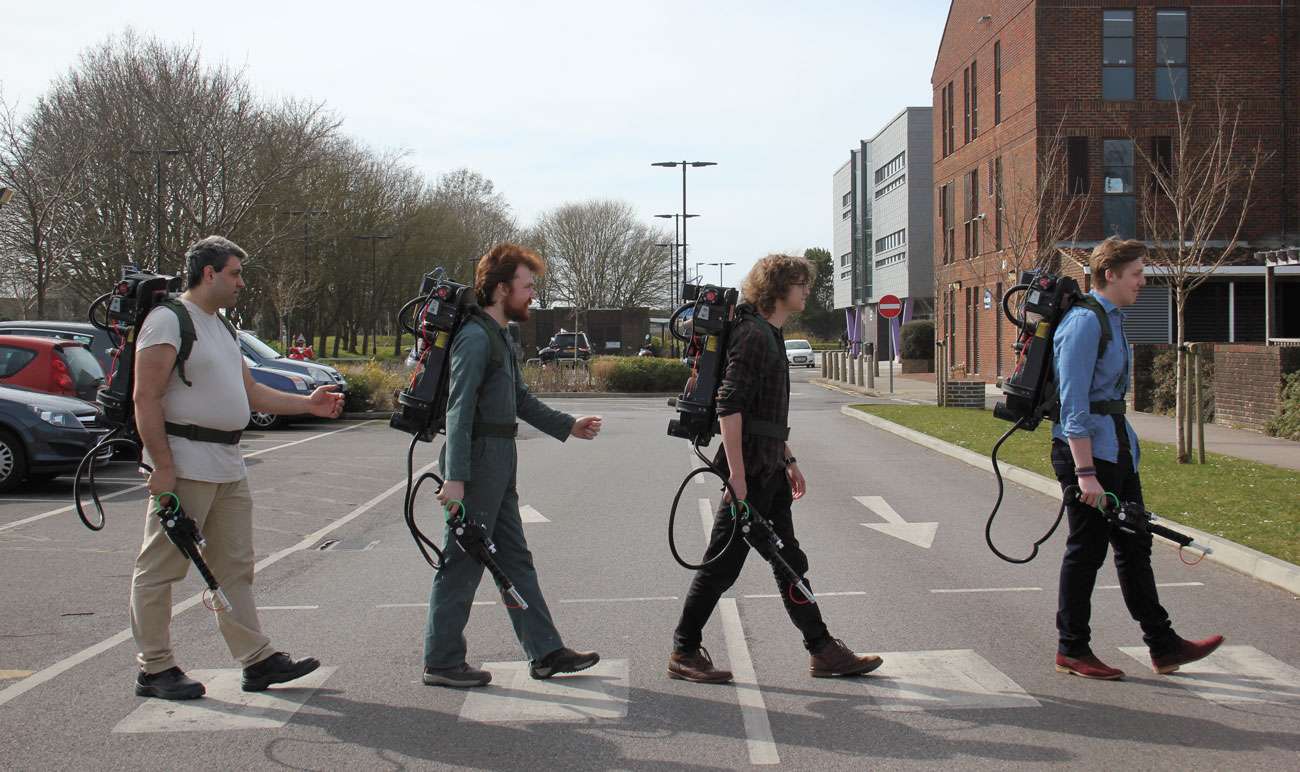
Who you gonna call . . . ?
Christopher Sutton has a passion for creating models and props. We met up with him recently to hear about how this passion came about and his training and experience so far.
I’m a Sussex boy, born and bred, living in Southwater all my life. I have one brother and two dogs!
My Mum doesn’t pride herself with being very creative but she’s inspired my brother and I to be. My Dad’s very creative and has his own marketing company, which involves a lot of ingenuity with ideas and concepts. Both my parents always encouraged us to draw and be creative when we were very young and from that it developed to more exciting things like clay sculptures.
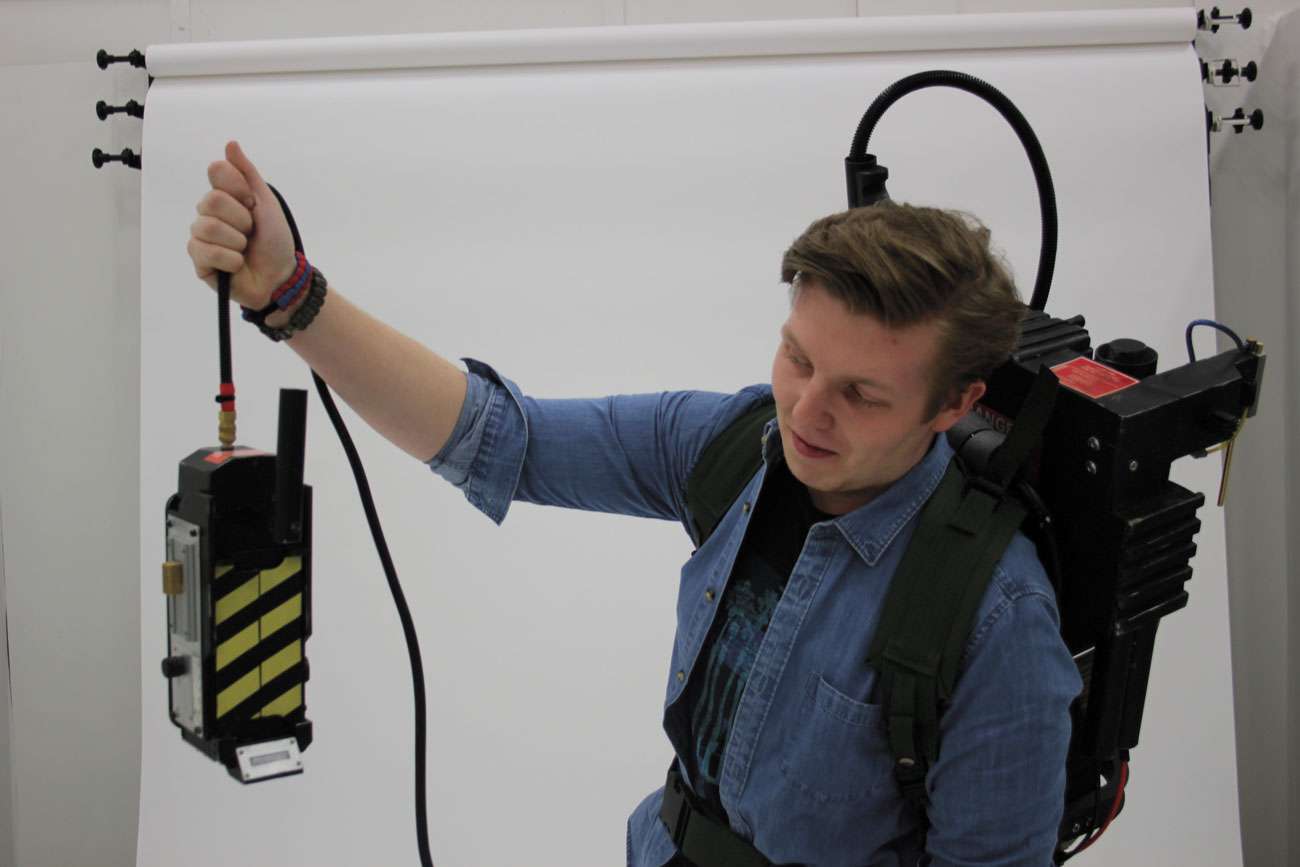
At the moment my brother is working as a wildlife film maker. He recently funded a trip to Africa to film a pilot for a documentary. I’d call myself a generalist prop maker, involving model making, sculpting and things like that so there’s quite a variety of talents in our household.
At school when I was younger, I would get distracted at times in certain subjects like maths and history. For me it was the creative subjects that were the exciting ones. We didn’t have many art lessons in primary school, but whenever we did, I was very enthusiastic. During every art lesson I always tried to make something instead of just drawing.
I also enjoyed any outside activities too. When I was in year 3, I went on an Art Enrichment course and distinctly remember, we just walked around the woods looking at the trees, soil, bushes and picking up various nature bits and bobs. I recall we were encouraged to tie a bunch of sticks together. I made a crane out of the sticks I found. We had to examine the sticks looking for shapes and I spotted a shape that resembled the head of a crane and just started to make a sculpture there on the spot. I did manage it and have a picture of it lurking around somewhere.
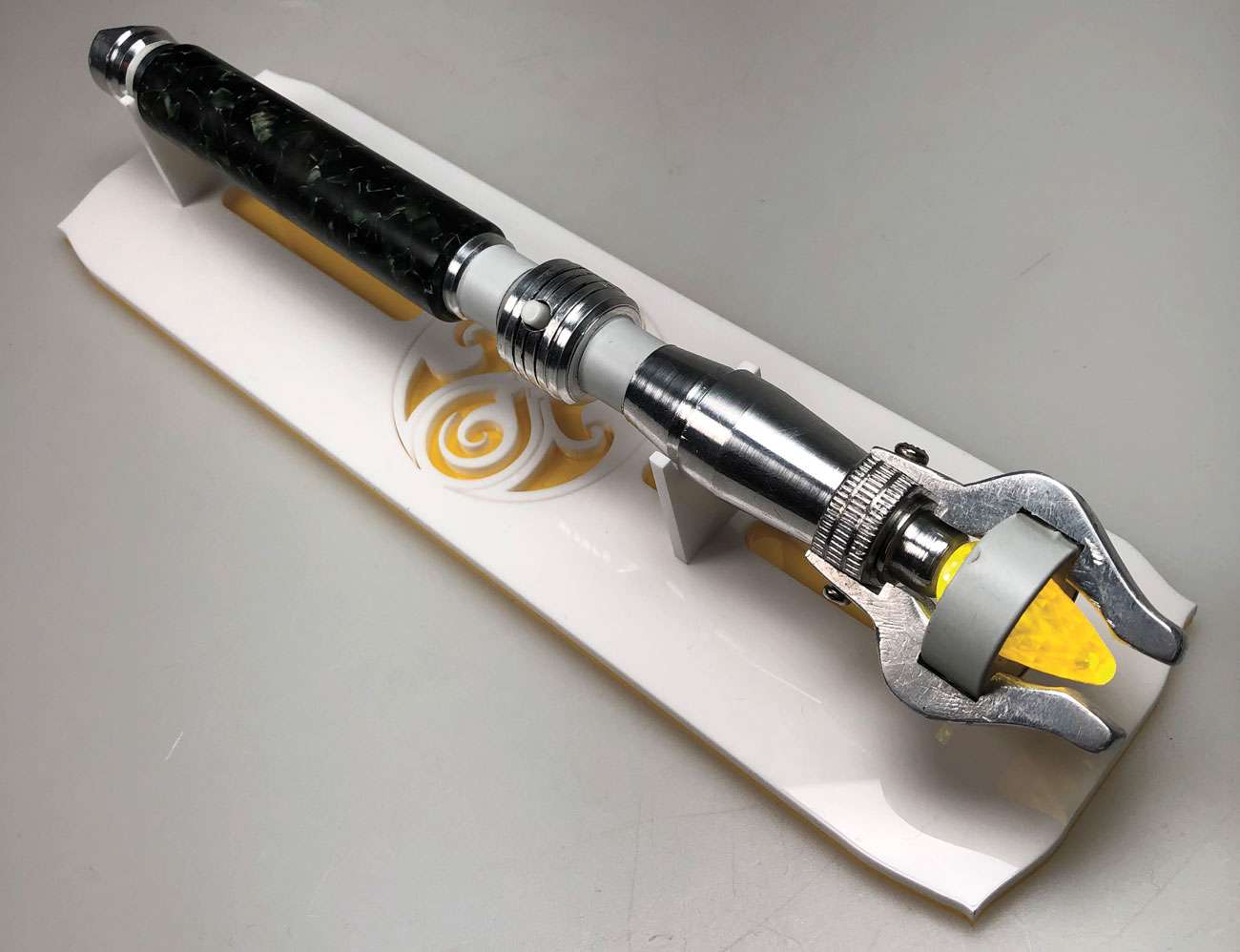
My own design of the Doctor’s Sonic Screwdriver
I recognised from a very young age that I wanted to work in film as a prop maker. I’ve always loved making things in general and I think watching loads of films, which my dad can be blamed for, is what really got me into it. We would watch the Spielberg movies and I would marvel at all the creative ideas involved. Star Wars in particular, is one of my favourite films. Television shows like Doctor Who absorbed my imagination, because they helped me connect with things in our country when episodes included the Daleks or Cybermen and all those creative designs.
Even when very young I would get a lot of satisfaction from building a propo or costume for example, as opposed to buying or being given one as a birthday or Christmas gift.
For me I find I connect with the object far more when I’ve put my heart into making it and completing the task. As a child I would ask for the tools as gifts and the materials required, to make such a costume. There are resources called Visual Dictionaries, which break apart all the objects you see in a film with detailed photos and descriptions of how they’re made and used, where they are made and all that kind of information.
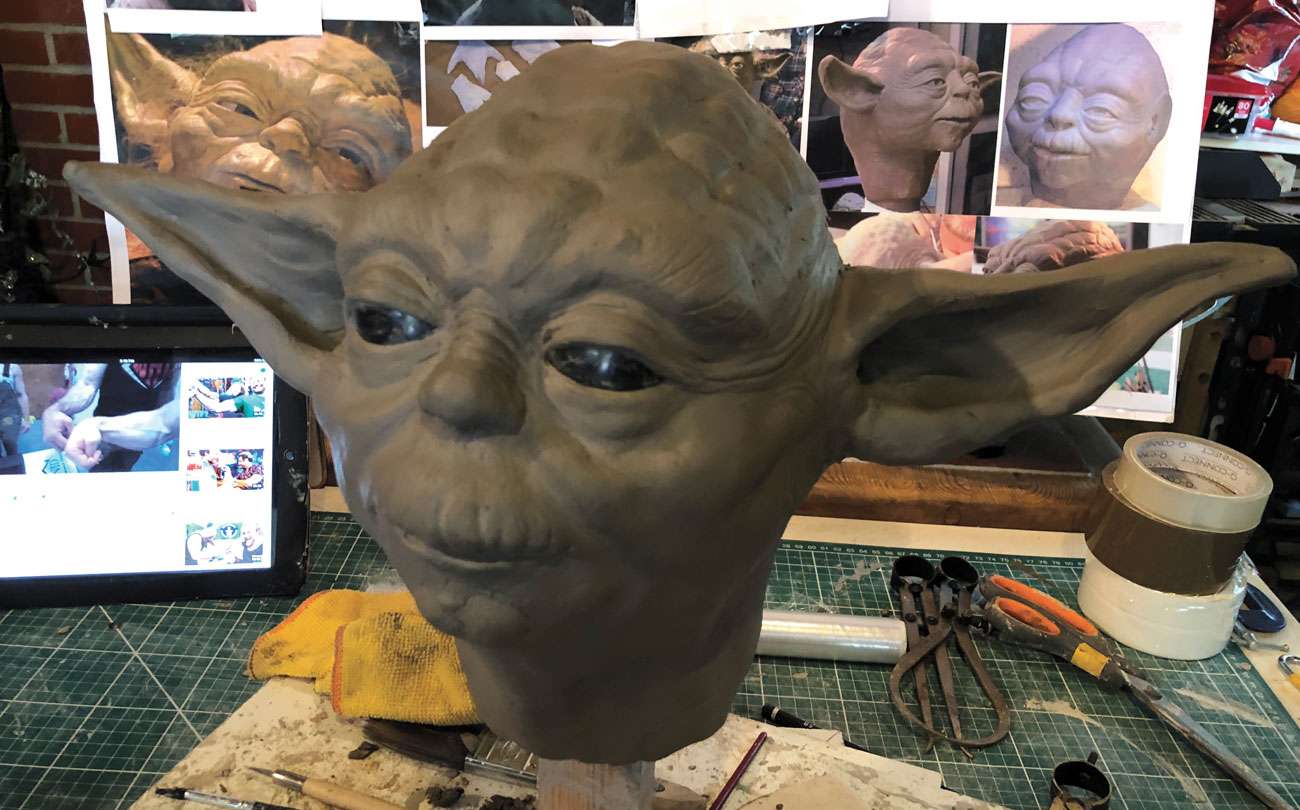
Design for Yoda from Star Wars
I must have been about 10 when I first thought of being a prop maker and really understood what was involved in the role. That idea sprung from watching a ‘Behind the Scenes’ feature on one of the Lord of the Rings films. The scenes demonstrated the background with concept art outlining how it all came about. I just got sucked into it through those documentaries, they really were the cause of it all. Lord of the Rings was filmed in New Zealand, on the opposite side of the world but I somehow felt connected in the way they worked and the environments they work with.
When making a prop replica, I can visualise the exact goal in mind and it’s the challenge of how to get there and find a way to make it work, that’s the thrill for me. On every occasion, I add to my arsenal of skills and techniques. Every project is a learning curve along the way and the more projects I do, the better I get at it.
One of the first props I ever attempted was a Sonic Screwdriver as seen on Doctor Who. At the time I just formed it out of cardboard and wire that sort of thing, I didn’t really know what I was doing but I enjoyed the exercise of working out the design. I’ve actually gone on to make some more quite recently and the new versions would actually be quite saleable on TV. For anyone who doesn’t know what a Sonic Screwdriver is, it’s a tool that the Doctor carries around to unlock doors. It’s not a weapon or anything like most of the characters carry, it’s just a device, essentially a very useful plot device and is a key part of the programs that’s changed over time.
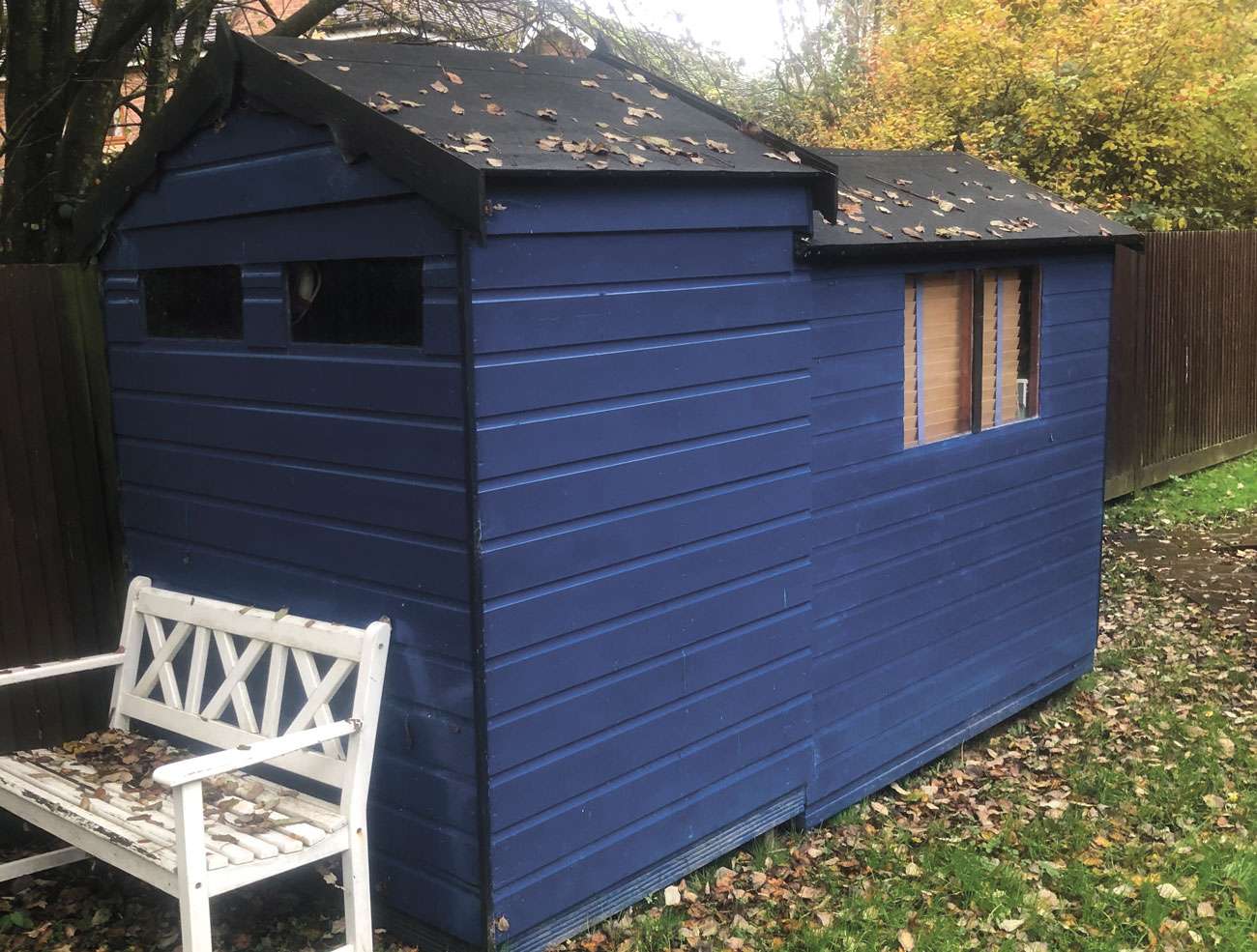
The shed where it all began . . .
My journey to becoming a prop maker started with finding scraps around the house, my parents being happy to help with additional selection of bits along the way. Most of the time I try to reuse and recycle anything available. Often the idea evolves from those elements, dictating what I create each time and making it unique.
The first project where it dawned on me that I might be able to become a prop maker was making a model ship. I created it behind the lounge sofa out of glue and lollipop sticks, that sort of thing. As I look back, in reality it wasn’t quite the model I remember it being when I was 13, but it was definitely a pivotal project for me, because I completed it and people actually recognised and respected it for what it was.
My work environments have improved greatly since my ‘workshop behind the sofa’! I initially moved into the shed. It was my dad’s shed, which meant he was shed-less for a time. A man without a shed, no one wants. I remained there for about 5-6 years before some of my bigger projects required a move to the garage, where I still work nowadays.
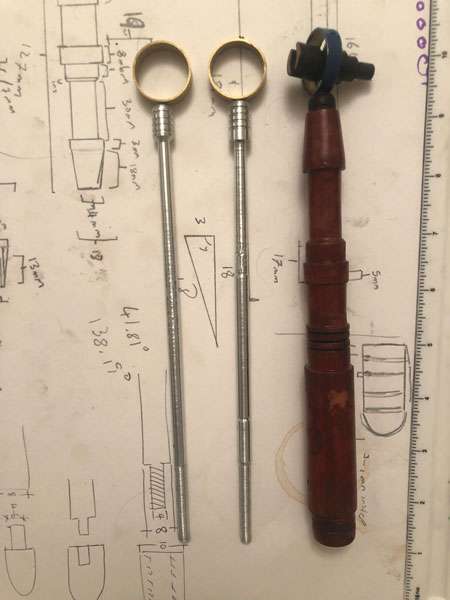
The making of Tom Baker’s Sonic Screwdriver
Before departing the shed, I built an extension to it, doubling the size and adding a better floor. I had two different workbenches for different kinds of projects. One side tended to be the messy area, while the other was clutter-free and tidy. It was oddly homely in my shed, I had posters and other things to cheer it up. You’ve got to be inspired as you work.
When I left school, I attended Collyers 6th form college. From Collyers college I was lucky enough to get onto a course at Northbrook University where they had a massive workshop. It was quite a game of mine to get to know every bit of machinery while I was there, just to add that to my repertoire. Once I learnt new skills, they became second nature. There were hand saws, chop saws, lathes, machine lathes, metal benders, welding equipment, laser cutters, a huge list. I think the tutor grew sick of me being there all the time.
I worked on many of my college projects in the shed back home, because I often found I couldn’t work in the art rooms, my projects were far too messy and noisy and I got in the way of other people around me. Solitude and concentration are key for model making. I like to take a step back and spend time just working things out. If there are too many people around it can be difficult to remain focused.

My own design of a model ship
I was at Collyers college for two years, then went onto Northbrook for a further three. In college I did BTEC in Art & Design, Film Studies and English Literature and Language. At university I got a First-Class Hons Degree in Prop Making and SFX. My final year was very different because it was more academic concentrating on writing my dissertation. The dissertation contributes to a large percentage of the final mark. I did quite well with it in the end.
There are so many techniques and tools available these days. There can be a lot of lettering and fine intricate detail involved in some projects, that by hand would be far too fiddly and take too much time to fashion. I tend to use a laser cutter to cut acrylic. The computer software Illustrator, makes it possible to cut it accurately in seconds.
Mastering the various techniques adds its own challenges. It can sometimes feel like being a ‘Jack of all trades but a Master of none’. For me, if I was to listen to a tutor telling me how one particular technique should be done, I wouldn’t necessarily remember what I was taught. But as soon as I apply it myself, in a real working environment on a project, it sticks in my mind and becomes one more ‘tool’ in my overall skillset.

Parts for the Ghostbuster’s Backpack
I have had a wide range of projects over the years. I made a model submarine during College, out of a material called Styrene, which is a type of plastic, which I discovered works well. I also made a model treehouse at one point, inspired by a book by Jules Verne. I made it out of shipwreck parts. Both of those models went on display in the Horsham Museum at one point during a College Exhibition, which was very exciting.
My diving helmet was a big one for me. When I had the concept, I had no idea how I was going to even begin. Essentially, I had to plan heavily for that project in advance just to make it work. At that point I hadn’t used the laser cutter or even fibre glassing, but this launched me headlong into it and now I’ve got those skills for the future if ever I need it. I could probably make it much faster now if I was to do it again.
In my third year I delved into new processes of lathing, milling and metalwork, which I used to make the newer Sonic Screwdriver replicas. I made one for a friend as well so there was quite a bit of pressure to get that one right.

Hard at work!
As you can tell, I’ve jumped into projects without knowing how to use the machinery at all. Fortunately, there have always been people around me like the technicians at college, to learn from and soon it becomes second nature.
I believe my passion for this kind of work was nurtured by my family who’ve always encouraged me to generate my own work with some sort of drive. I strive to be creative and find ways to express myself through my work. Films are quite a creative outlet for bizarre projects involving ‘weird worlds’ and everything that another job would never offer.
I’ve made ships, similar to those in the Pirates of the Caribbean, recreating scenes from my own imagination. It’s a prop maker’s dream, to work in that kind of industry.
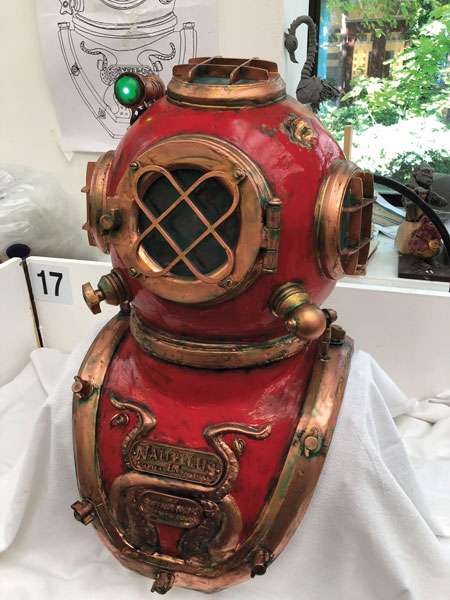
A full size ‘Nautilus’ diving helmet at exhibit
In terms of going forwards, I’ve got some commissions, which is exciting. Any new project can be quite difficult and daunting. There’s a great deal of planning involved. It’s easy to have an idea, go head long into it and get stuck. Planning is one of those things that’s evolved for me. It’s all about order and knowing your end goal, knowing how long it’s going to take and what materials you’re going to need. Essentially, I know the exact build in my head before I start. I picture the objects that people describe to me. Once I’ve picture them, I draw sketches to work them out further. It’s all about the order of the operation I’ve found.
I have been inspired in the past by things I’ve seen in films like Alien. It’s not the prop maker’s work that fascinates me necessarily, but a designer like Geiger, the artist, in that film. No one had seen anything like that in a Sci-Fi movie at the time.
So say in the scene when John Hurt is being operated on and there’s the that comes of out of his chest – I’d imagine they would have done hundreds of tests, just to work out what angles would work. It’s down to the trick of the camera, trying to make people believe it’s the same creature. But it may be a cut from another angle of a different creature, it’s not always the same sequence. Getting it coherent and readable is vital. There’s a skill set in pulling the wool over people’s eyes. It’s sometimes an illusion in film making and to get it to read a specific way is very important, especially anything organic.

Model ship for Jules Vern
I love the Jaws story, in which Spielberg has only a few minutes of actual shark footage where he used a prosthetic shark, the rest is actually only implied not seen, by the theme tune. It’s all about the suspense and you don’t actually see anything at all.
Ultimately, I’d like to work in a film or TV company, maybe at Shepperton or Pinewood Studios, one of the companies around there. Essentially I’m trying to push my own work at the minute and build up a portfolio and hopefully get some interviews. I would love to work on some big international films, that’s a huge dream of mine.
Then years down the line, I’d like to have my own company and create my own work. In the meantime, I never lose enthusiasm, I send lots of emails and accept that many responses are going to be ‘no’s’. But if I persevere then something will happen. It’s important not to give up and keep pushing doors. Inevitably some will open. When I’ve had positive outcomes, I get such a high and that’s a great feeling!

My own design of a model ship for Pirates of the Caribbean
It gives me a lot of satisfaction when I display my work publicly. In my final year at uni, for example, I worked with three other students on a project which was placed in an exhibition in Worthing. Everything there was made by our group, even the glass display cases. Just seeing members of the public come in and look at our work, was very encouraging.
The whole theme of the project was to imagine that in the past aliens had visited the earth. We recreated artefacts the aliens might have left behind, implying a story with missing elements and clues. Occasionally we made it seem as if we’d misinterpreted the objects in front of us, so people would want to ask us questions about the pieces. When they did, we continued the setting acting as we went and implying it was genuine history. There was a real ‘feel good factor’ with the work. It’s important to tell a story through each creative piece, adding more emphasise and passion.
Raising sufficient monies to keep going is hard but I usually find a way. The time frames on each project can vary because of that. Model making is fairly low cost and therefore a very accessible way to initiate a project, as they start very small and don’t require many materials. Beginning with model making is crucial for me. As I progress more money is generated and there are bigger things to work on. Often starting small is key – ‘Start small, think big!’

My girlfriend and I on graduation day
If any young person is considering going into this kind of work, I would suggest you’ve just got to dive into projects as creatively as possible. People often try to deter and steer you away to do other things with a promise of a more solid income. But if you have the drive to keep going it’s absolutely possible to do though you’ve got to be willing and patient. Always keep your enthusiasm up, there will be moments when you don’t know what you’re doing and you’ll lose track of your project. But there’s always a way to find your feet again and work something out.
In order to progress and stay motivated in pursuing anything in the creative industries, it’s important to surround yourself with the right kind of people. Sometimes you meet people who don’t quite understand your ambitions and when you talk about your goals they glaze over and struggle to take you seriously. I’m lucky enough to have some very creative friends and people to talk about bizarre props and our shared creative interests. I met my girlfriend in my final year at uni where she was studying to become a costume designer/maker. She does some absolutely amazing work that always inspires me and the fact we can both discuss creative things together has never failed to keep me motivated on some of the more challenging projects. We recently graduated together which was an amazing experience to share. To me having people around you that understand the subject is key.
When I was young and first adopted the shed, I made the decision early on to paint it blue. Not just any blue though, Tardis blue. It seemed as though subconsciously this was where I would go to escape and express myself creatively and have adventurous times doing what I do, making things. The fact Doctor Who had always ignited my imagination meant having an environment like the Tardis, seemed fitting. Several coats of paint and years later the shed is still very much blue, ‘Tardis blue’!
For more information and commissions contact Christopher Sutton here:
07412159179
www.csutton601.wixsite.com/christophersutton











